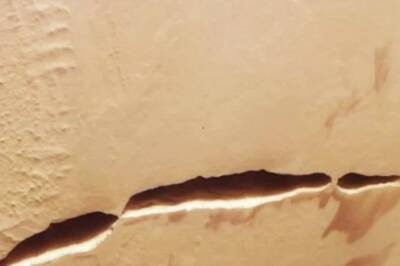
views
Guwahati: The body of a labourer detected in the depths of the flooded rat-hole coal mine is likely to be retrieved Tuesday morning after the operation was suspended on Monday. Despite the possibility of disintegration, sources said attempts would be made to pull up the body to the surface.
According to district administration officials, the deceased is said to be wearing a pair of blue jeans and a red T-shirt, images of which were captured by the underwater ROV used in a joint operation by the NDRF and the Indian Navy divers. The ‘decomposed’ body was detected on January 16 at a depth of 210 feet from the surface. Earlier, officials said that body was pulled till the mouth of the rat hole. However, the Navy suspended operation on Monday as a clearance from the state government was awaited.
Family members of the victims from Lumthari and Chirang are expected to be present at the site when retrieval operation would resume in presence of forensic experts and health department officials.
Both the Centre and the state government on Monday told the Supreme Court that the rescue operation would not be called off and that no rescue agency would leave the site.
The status report submitted on behalf of Meghalaya government mentions that the ‘identity of the miner could not be determined as he was found lying prostrate with his head downward and flesh from the skull already starting to decompose’.
The report further states the ROV was used to move the body from a depth of 210 feet to 100 feet from the original position, but due to the condition in the rat-hole, there are signs of decay, making the extrication process difficult.
Advocate Amit Kumar, appearing for Meghalaya, quoting from the report says: "In the process of pulling the body, the skull, the left wrist, and the leg from the knee level got disengaged. It is the considered opinion of the naval team that if the body is pulled further, there will be total disintegration of different parts, rendering the same virtually impossible to retrieve.”
“Presumably, and as per the latest reports, the bodies of the remaining miners are behind the body detected on January 16,” the report reads.
The report mentions that a team of geologists and geophysicists from NER, Shillong, and representatives of National Institute of Hydrology (NIH), Roorkee, NGRI Hyderabad, NDRF, Indian Navy and others was formulated for ascertaining geological data of the area to identify the reason of seepage.
It states that based on the data available it was found that the shaft had been dug from upper limestone bed exposed along the back-slope of the shaft and excavated almost up to the top level of the lower limestone bed.
"The water level was observed to be maintaining a level which is presently at a depth of about 50m from the surface. The constant water column of about 65 metres in the main shaft is the main hindrance for the rescue operation of NDRF, Indian Navy," the report adds.
On Monday, 81 lakh litres of water was pumped out from two old shafts of the abandoned adjacent mines with the help of high power pumps brought in by the Coal India Limited, Kirloskar Brothers and Odisha Fire and Disaster Rescue teams. But despite crores of litres being pumped out, the water level inside the flooded rat-hole mine where 15 labourers went missing on December 13 last year remains the same.
On the other hand, a mine sirdar from Assam on condition of anonymity said that only traditional method used by villagers in East Jaintia Hills can help locate and retrieve the bodies.
“No scientific method applied will be successful here. The mine sirdars know best and the government should take their help to find way through the web of rat holes,” he says.
He then goes on to explain the depths and dimensions of a rat-hole coal mine, while admitting that it’s illegal.
“It’s a 30”x30” rectangular box. Some of these can be 400-500ft deep. From the bottom of the pit, horizontal chambers of 2-3 ft height and as long as 400-1000 ft goes to the hills. These chambers are connected to the lateral mines. About 40-50 people work inside the mine at a time - aged between 18-50 years. Some mine sirdars also use children. There is 1-2 feet water inside these mines that is constantly being drained out while work is on. And when there is shortage of oxygen, the drilling machine pipes pump out air to help them breathe.”
“If you go down the mine, every 10 feet, you will find two paths in two directions- would you know which to take?” he adds.


















Comments
0 comment